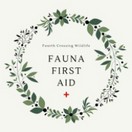Short Term Care

Short Term Care for Lizards
It is important to remember that an injured, sick or orphaned lizard, as with any wild animal, will be stressed when caught. It is very important that it is kept in a dark, quiet place, away from children and family pets.
The most common lizards to come into care (in the Central West region of NSW) are Blue-Tongue Lizards, Shingleback Lizards and Bearded Dragons. These can be cared for and fed in the same way.
If the lizard does not appear to be injured put it into an aquarium (not filled with water!), and place a low power (around 25 watt) coloured light globe, eg: a green or red globe at one end. If a coloured globe is not readily available, use a pearl or frosted globe. Line the aquarium with leaf litter and something for the lizard to hide under eg: a log, or some strategically placed rocks. Place a dish of water in the aquarium to keep the air humid.
If the lizard is injured, put it into a box so that it cannot move around too much. Do not put a heat source in the box, the lizard will get too hot. Keeping the lizard cool will slow down its metabolism and provide more time to treat infections, etc. Put the lizard in a dark, quiet place, and leave it alone until an experienced carer can collect it, or take it to a veterinarian.
Do not feed any wild animal for at least a few hours after rescue - they need to have their stress levels reduced and too much human contact can send them into shock. Additionally, it is very important that you do not feed a cold animal as any food will not be digested properly and the lizard may die. If the rescued lizard is cold you will need to warm it very slowly (unless it is injured, see above paragraph). If you warm the lizard too quickly it may die from heat-stress related complications. An animal that is badly injured or sick will not want to eat. If this is the case, just leave the lizard in the box until an experienced carer can collect it, or take it to a veterinarian.
Food for a lizard can include insects, snails and worms found in your garden, or lean mince.
Do not attempt to feed the lizard by hand, as this could stress it more, leave the food in the box and it will eat when it is ready.
Just remember to use your common sense when caring for a lizard. You are caring for a wild animal, it is not a pet.
Keep pets, family and friends away from the animal at all times.



